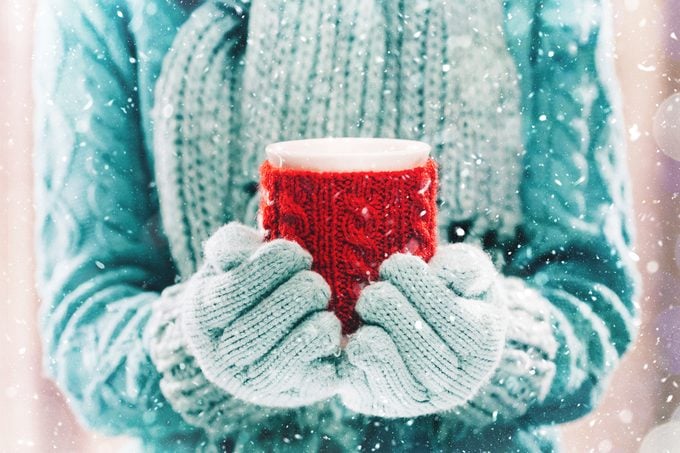Here’s Why You Shouldn’t Drink Coffee on a Cold Day
Updated: Jul. 17, 2023
Sip some hot chocolate instead.

When the temperature tumbles, a steaming cup of coffee might seem like just the ticket to help you get toasty. It turns out, though, that the java could work against you, the Wall Street Journal reports. Why? Well, most of the time, we’re warmer than our surroundings and we give off heat. When it’s cold out, however, your body reacts by shivering, generating more heat to your core. Here are 7 tips to keep your hands and feet warm.
Drinking a big Thermos of joe on a cold day will likely cause you to urinate because caffeine is a diuretic. And that’s “another way to lose heat because that fluid is much warmer than the surroundings,” says Alan Hedge, director of the Human Factors and Ergonomics Laboratory at Cornell University.
Another drink that won’t warm you up? Alcohol. It’s another diuretic that causes your blood vessels to dilate, Hedge notes. That’s why some people who drink alcoholic beverages in cold temperatures can wind up with hypothermia.
So what can you drink to warm up? Hedges gets his answer from Mongolia. During the reign of Genghis Kahn, people stayed toasty by drinking a beverage that contained yak butter. “The Mongols drank fresh, warm mare’s milk, which gave them the ability to have a sustained, warm, high-caloric diet that kept them warm,” Hedge says. Find out 9 ways to trick your body into feeling warmer.
So go ahead and order that hot chocolate or latte—just make sure it’s decaf. Not a fan of milk? Try a non-caffeinated beverage between 98.6 (your body’s normal core temperature) and 115 degrees. One study shows that a drink in that range should make your body feel about 2.6 degrees warmer, the Wall Street Journal reports. A nice cup of chamomile tea should do the trick. Next, check out these winter survival tips from the coldest part of the country.